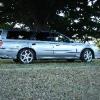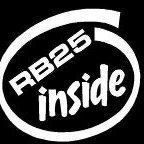Thanks Santa (the neverending trials of the 400,000klm, 400kw, RB30, manual swapped Stagea)
Announcements
-
Similar Content
-
Latest Posts
-
By Murray_Calavera · Posted
@PotatoCake Is the GTR your daily driver? -
Aes valve sort of but not really, will practically turn it into a straight pipe. So if you already had a well muffled exhaust system but the want more noise, you open the valve. Sometimes precat, sometimes postcat.
-
By PotatoCake · Posted
This is my main problem i suppose, u just cant beat the note of the rb26, and i dont really want to lose that. Are there any other options besides the varex exhausts then? -
That's the worrying thing about Enthusiast, haven't heard many if any claim stories. Whereas Shannons you do, the good and the bad. I'm with Shannons and with my premium going up every year, I've been tempted to call around but just haven't out of pure laziness and the unknown.
-
By Dose Pipe Sutututu · Posted
Here's the thing, has anyone actually put in a claim? I am with Enthusiast too, however technically our cars aren't 100% road legal. In the event something happens, would they just go "oh stiff shit lad, yeah nah, your car isn't road worthy, we ain't paying you a cent" That's what I'm afraid of, even though I've listed all the mods on the policy (max out the box).
-






Recommended Posts
Create an account or sign in to comment
You need to be a member in order to leave a comment
Create an account
Sign up for a new account in our community. It's easy!
Register a new accountSign in
Already have an account? Sign in here.
Sign In Now